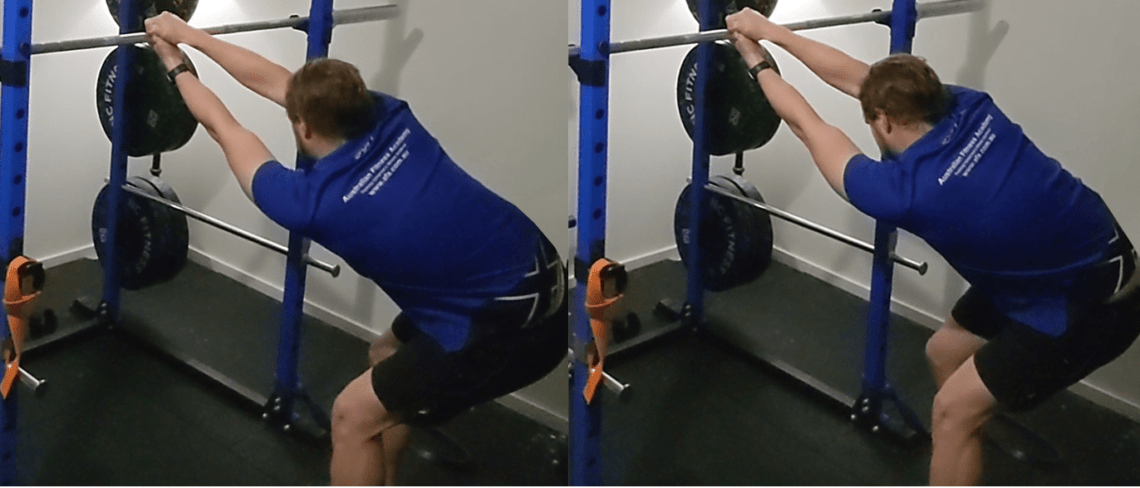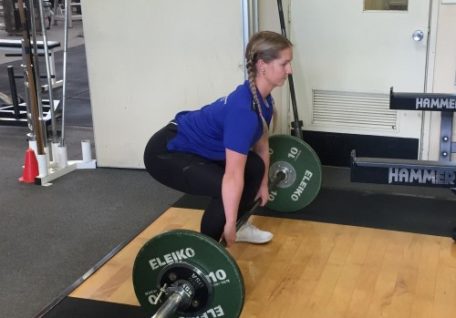The lats are a complex muscle. They’re the biggest muscle of the upper body, originating on the spinous processes of the T7-L5 vertebrae, thoracolumbar fascia, iliac crest, lower 3 or 4 ribs and inferior angle of scapula and inserting onto the front of the humerus (on the intertubercular groove). The lats anatomy makes them one of the primary muscles responsible for shoulder extension, adduction and internal rotation.
Part of the reason you should stretch your lats more often is due to the insertion point being on the front of the humerus. When the lats get tight, they tend to pull the humerus into internal rotation which can cause shoulder discomfort and limit shoulder mobility. In addition, because a tight lat can also contribute to locking down the thoracic region of the spine further, this can limit the ability for the shoulder to extend overhead.
If you’re wondering whether your lats might be a bit tight, you can do the following quick test. When you perform this test, do one arm at a time and feel for any restrictions:
- With your palm facing your pocket bring your arm overhead straight out in front of you
- Now externally rotate your shoulder (have your palm facing forward), and do the test again
If you found a noticeable restriction when you externally rotated your shoulder you may benefit from performing some lat SMR and stretches.
By performing external shoulder rotation and shoulder flexion you are doing the exact opposite of what the lats like to do, and basically testing their ability to lengthen.
So, now that we’ve identified a problem, let’s look at a solution!
Even if you aced the test described above, these techniques can be great to implement into your routine, especially if you spend a lot of time sitting in a car or at a desk.
Stretch #1
First, we need a foam roller, a resistance band, and something to anchor the band to (a power rack in this instance). Anchor the band low to the ground, and grab hold of the other end. In this position, we are going to foam roll our lats, using the band to hold on to and keep our arm extended out in front of us. Start rolling up and down the back of the lat and pause on any spots that are tender for 20 – 30 seconds. The next technique is a little bit nastier. When you’ve rolled the lat from top to bottom, slowly roll further onto your stomach over the roller and move up and down slowly.
After a minute or so of foam rolling, we can move into our stretch.
Stretch #2
You can use a barbell on a power rack for this, or a suspension trainer, or really anything solid you can grip onto. Begin by grabbing the barbell using an underhand grip, using the other hand to hold it in place on top. From here, we are going to slowly sit back into our hips and lean to the side. With this stretch we are basically trying to get the origin points of the lat as far away from the insertion point as we can, so we can further rotate our supporting arm side closer to the barbell to intensify that stretch. Hold this position for 30 seconds to 1 minute before swapping sides.
If we’re trying to directly improve our mobility, it’s important to always test and retest after we’ve tried a mobility drill. So make sure after performing those two techniques you retry the test above to see if it made a difference.









